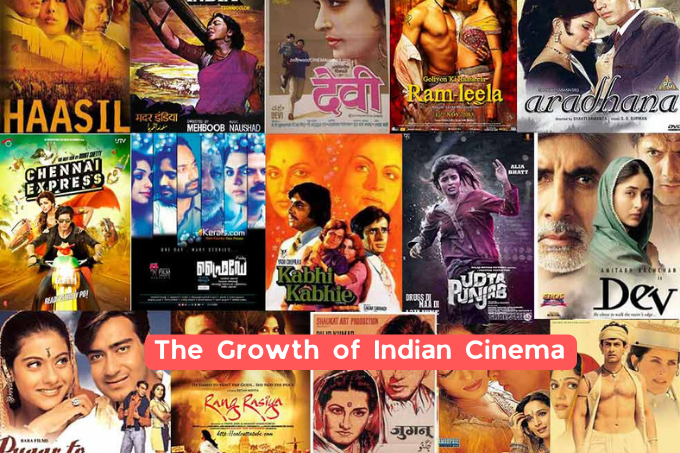Introduction
1. Explanation of what Indian Cinema is and its significance
2. The history of Indian cinema
3. Statistics to back up the claim of being the most significant film industry in the world
The Growth of Indian Cinema

1. How Indian cinema has grown over the years
2. Explanation of the different types of Indian cinema (Bollywood, Tollywood, etc.)
3. Comparison with other film industries
The Making of an Indian Film
1. The process of making a film in India
2. The role of music and dance in Indian films
3. The impact of Indian films on Indian culture
The Business of Indian Cinema

1. The Indian film market and its size
2. The global reach of Indian cinema
3. The role of Indian cinema in the Indian economy
Challenges Faced by Indian Cinema
1. Piracy and its impact on Indian cinema
2. Censorship and its effects on the industry
3. The challenges of international recognition for Indian cinema
The Future of Indian Cinema
1. The potential for further growth of Indian cinema
2. The possibility of greater recognition for Indian films internationally
3. The role of technology in the future of Indian cinema
Conclusion
1. Recap of the importance of Indian cinema
2. Final thoughts on the future of Indian cinema
Indian cinema, also known as Bollywood, is the world’s most significant film industry in terms of the number of films created and the number of tickets sold annually. With a history dating back to 1913, Indian cinema has come a long way to become a global phenomenon.
Indian cinema has grown from producing a handful of silent films to over 1,500 films yearly in multiple languages. Bollywood, the Hindi film industry, is the most popular and widely recognized face of Indian cinema. Still, other regional film industries like Tollywood in Telugu, Kollywood in Tamil, and Mollywood in Malayalam exist.
Making an Indian film involves multiple steps pre-production, production, post-production, and distribution. Music and dance are integral parts of Indian films, often used to convey emotions and take the story forward.
The Indian film market is estimated to be worth over $3.6 billion and has a global reach. Audiences in India and other countries like the United States, Canada, the United Kingdom, and the Middle East watch Indian films. Indian cinema has contributed significantly to the Indian economy by creating jobs and generating revenue.
However, Indian cinema also faces several challenges. Piracy is one of the biggest problems faced by the industry. Pirated versions of Indian films are widely available, causing a significant loss to the industry. Censorship is also a problem that Indian cinema faces, as certain scenes or themes may be deemed unsuitable for Indian audiences.
The future of Indian cinema is bright, with the potential for further growth and international recognition. Technology like streaming platforms and social media is also expected to play a significant role in the future of Indian cinema.
In conclusion, Indian cinema is a vital part of Indian culture and a significant contributor to the Indian economy. With its rich history, unique storytelling style, and immense popularity, Indian cinema has become a global phenomenon. It is expected to continue to grow and evolve in the years to come.
FAQs
1. What is Indian cinema?
Indian cinema is the world’s largest film industry in times of the number of films produced and the number of tickets sold annually. It includes multiple regional film industries like Bollywood, Tollywood, and Kollywood.
2. What is the history of Indian cinema?
Indian cinema’s history dates back to 1913, when the first silent film was produced in India. Over the years, Indian cinema has grown.
3. What are the different types of Indian cinema?
There are multiple types of Indian cinema, including Bollywood, Tollywood, Kollywood, and Mollywood.
4. What is the impact of Indian cinema on Indian culture?
Indian cinema has a significant impact on Indian culture and society. It often addresses social issues and cultural themes and has helped to shape popular culture in India.
5. What does Indian cinema face challenges?
Indian cinema faces several challenges, including piracy, censorship, and the challenges of international recognition.










